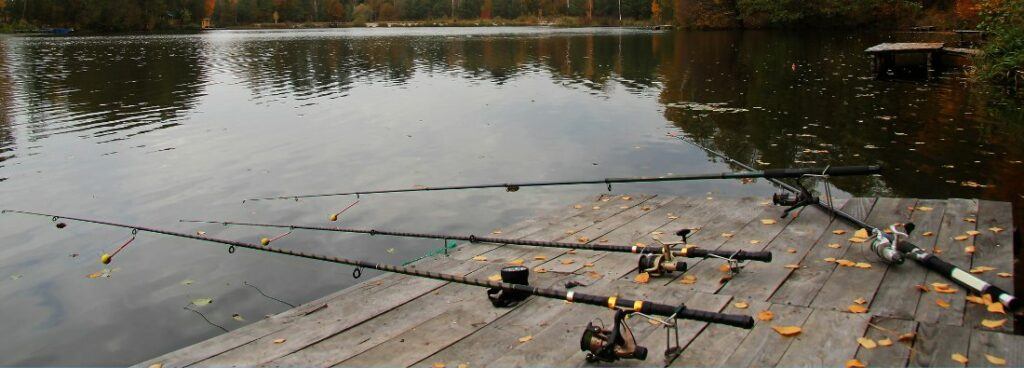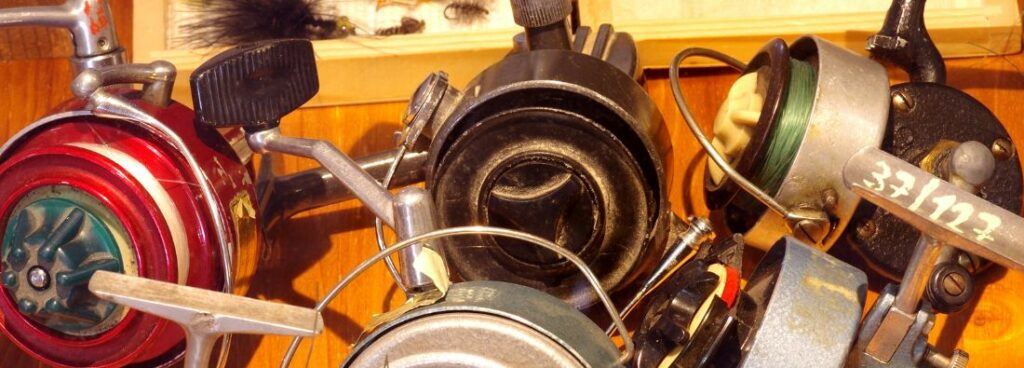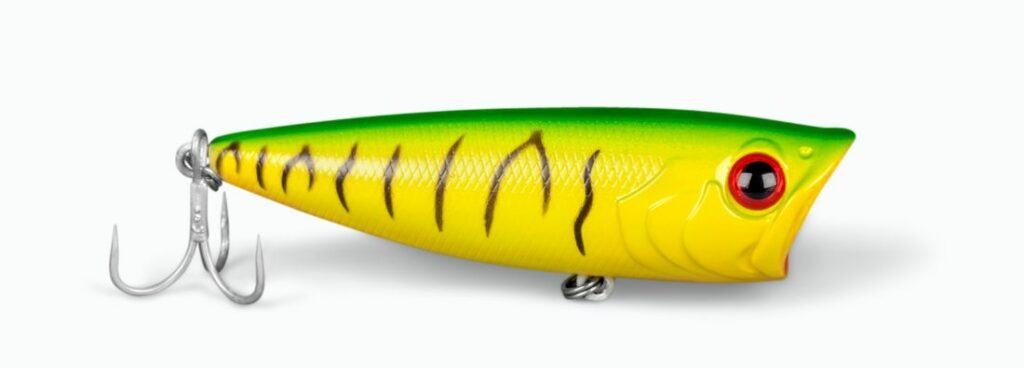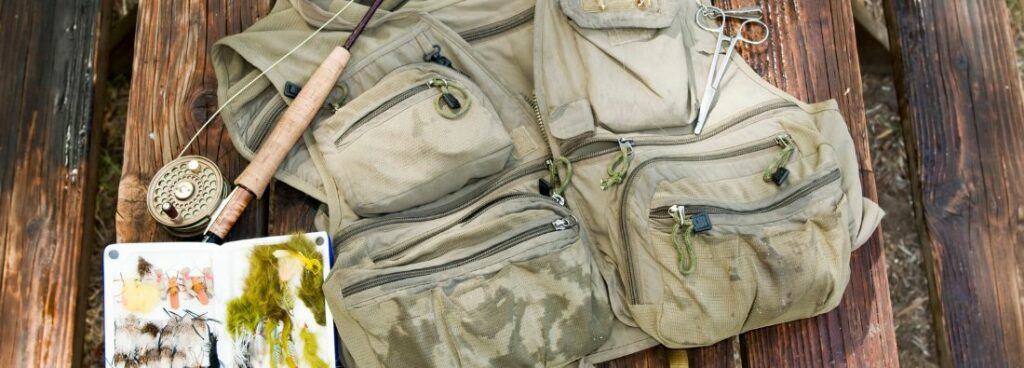Stories Worth Reeling In...
Last Updated on August 16, 2023
Are you planning on heading out to a lake for some fishing? Whether you’re a seasoned angler or a beginner, having the right gear is crucial for a successful fishing trip.
In this post, we’ll look at the different types of equipment that you’ll need to catch those big fish in a lake.
From rods and reels to lures and baits, I’ve got you covered.
Grab your fishing hat, and let’s dive in!
Table of Contents
The best fishing gear to use in a lake would be a versatile rod and reel, a good fishing line, a variety of lures and baits, and other essential gear such as a fishing hat, sunscreen, a landing net, and a cooler. It all depends on the type of fish you are trying to catch and your personal preference.
Having the right rod can make all the difference when fishing in a lake.
There are three main types of rods to choose from spinning, baitcasting, and fly.
Spinning rods are the most popular choice among anglers. They’re easy to use, versatile, and can handle many fish sizes. The downside is that they can be a bit heavy and cause fatigue in your arm after a long day of fishing.

On the other hand, Baitcasting rods are designed for more experienced anglers. They offer more control and accuracy when casting, but they can be tricky to master.
Fly rods are used for fly fishing, using an artificial fly as bait. They’re the lightest of the three types and are great for catching smaller fish.
However, they’re less versatile than spinning or baitcasting rods.
When it comes to choosing the best rod for fishing in a lake, it really depends on your personal preference and level of experience.
If you’re starting out, a spinning rod is a great choice.
A baitcasting rod might be better if you’re more experienced and want more control.
And if you’re looking to catch smaller fish, a fly rod is the way to go.
Like rods, the type of reel you use can also affect your fishing experience.
There are three main types of reels: spinning, baitcasting, and fly.
Spinning reels are the most popular choice among anglers. They’re easy to use, versatile, and can handle many fish sizes. The downside is that they can be a bit heavy and cause fatigue in your arm after a long day of fishing.

Baitcasting reels are designed for more experienced anglers. They offer more control and accuracy when casting, but they can be tricky to master.
Fly reels are used for fly fishing, using an artificial fly as bait. They’re the lightest of the three types and are great for catching smaller fish.
However, they’re less versatile than spinning or baitcasting reels.
When it comes to choosing the best reel for fishing in a lake, it really depends on your personal preference and level of experience.
A spinning reel is an excellent choice if you’re starting out. A baitcasting reel might be better if you’re more experienced and want more control.
And if you’re looking to catch smaller fish, a fly reel is the way to go.
The type of line you use can also play a significant role in your fishing experience.
There are three main fishing lines to choose from monofilament, fluorocarbon, and braided.
Monofilament is the most popular type of fishing line. It’s made of a single strand of nylon and is known for its versatility. It’s an excellent all-around choice for fishing in a lake. However, it can stretch and lose its strength over time.

Fluorocarbon is made of a single strand of fluoropolymer, which is a type of synthetic material. It’s a bit more expensive than monofilament, but it’s more abrasion-resistant, has lower visibility in the water, and sinks faster.
A braided line is made of multiple strands of synthetic material braided together. It’s the most durable of the three types and has the highest strength-to-diameter ratio. However, it can be more visible in the water, which can scare fish away.
When it comes to choosing the best line for fishing in a lake, it really depends on your personal preference and the type of fish you’re trying to catch.
Monofilament is an excellent all-around choice, fluorocarbon is a great option for fishing in clear water, and braided lines are perfect for heavy fisheries and fishing in cover.
When fishing in a lake, having a good selection of lures and baits can make all the difference. There are three main types of lures and baits to choose from hard baits, soft baits, and live baits.
Hard baits, such as crankbaits and topwater lures, are great for catching fish near the surface. They’re made of hard plastic or wood and mimic the movement of live bait. They can be more expensive than other types of lures, but they’re durable and can be used for a long time.

Soft baits, such as worms and grubs, are great for catching fish that are deeper in the water. They’re made of soft plastic and mimic the movement of live bait. They’re cheaper than hard baits and can be used for various fish species.
Live baits, such as worms and minnows, are great for catching a wide variety of fish. They’re natural and can be more appealing to fish than artificial lures. However, they can be more expensive and challenging to keep alive.
When it comes to choosing the best lures and baits for fishing in a lake, it really depends on the type of fish you’re trying to catch and your personal preference.
Hard baits are great for catching fish close to the surface, soft baits are great for catching fish deeper in the water, and live baits are great for catching a wide variety of fish.
Fishing in a lake requires more than a rod, reel, line, and lures. Here is some other essential gear that you’ll need to have a successful fishing trip:
Fishing gloves: Fishing gloves protect your hands from the sun and from getting cut by the fish’s fins or scales. They also help you to grip the fish and the fishing gear.
Pliers: Pliers are essential for removing hooks and cutting fishing lines. They help you to quickly and safely release the fish.
Fishing vests: Fishing vests are great for carrying all your fishing gear. They have multiple pockets and compartments that allow you to keep everything organized and easily accessible.

Fishing hat: A fishing hat will protect your head from the sun and keep the sun out of your eyes while casting and reeling in fish.
Sunglasses: A good pair of polarized sunglasses will reduce glare on the water and help you to see fish better.
Landing net: A landing net will help you to land fish safely and quickly without hurting the fish. It’s especially useful when fishing for large fish or in rocky areas where it’s challenging to land the fish by hand.
Cooler: A cooler will keep your drinks and snacks cold during a long day of fishing. It’s also useful for keeping your catch fresh until you’re ready to clean it.
Fishing line cutter: A fishing line cutter will help you quickly and easily cut the fishing line when it gets tangled or when you need to change your lure.
Sunscreen: Sunscreen is essential for protecting your skin from the sun’s harmful UV rays. It’s especially important when you’re spending a long time on the water.
Fishfinder: A fish finder will help locate fish by providing water depth and structure information. It can also help you find fish hiding in weeds or other covers.
First Aid Kit: Accidents happen, and it’s always better to be prepared with a first aid kit. It will help you to treat minor injuries and illnesses.
Insect repellent: Insect repellent will help keep mosquitoes, flies, and other bugs away while fishing.
When it comes to choosing the best fishing gear, it really depends on your personal preference and the type of fish you’re trying to catch.
Fishing gloves, pliers, and fishing vests are essential for any angler and should be included in any fishing kit.
In conclusion, fishing in a lake requires the right gear. From rods and reels to lures and baits, having the right equipment can make all the difference.
We’ve covered all the essential gear you’ll need for a successful fishing trip.
Remember, when it comes to choosing the best gear, it really depends on your personal preference and the type of fish you’re trying to catch.
This blog post has helped provide information about the best fishing gear to use in a lake.
Please share your own experiences and recommendations in the comments below.
Thank you for reading and… tight lines!
My brother and I spent half our childhood hanging out at a miles-long creek near out home. I wish kids were still doing that instead of being online all the time! My father took us fishing often, but my brother was the one who turned out to be an avid fisherman. Him and his friend down the street would go fishing in the creek almost daily. They also because experts at making their own flies which were as good as any I’ve seen in stores! Wonderful memories of fishing in my family!!
Wow, that sounds like a great childhood!
I totally agree, there’s nothing quite like spending time outdoors and bonding with family over a shared hobby like fishing.
It’s great to hear that your brother and his friend down the street were able to turn their passion for fishing into a daily activity, and even making their own flies is a really impressive feat!
I’m glad you have such fond memories of fishing with your family, it’s something that can stay with you for a lifetime.
Keep on fishing and making those memories!